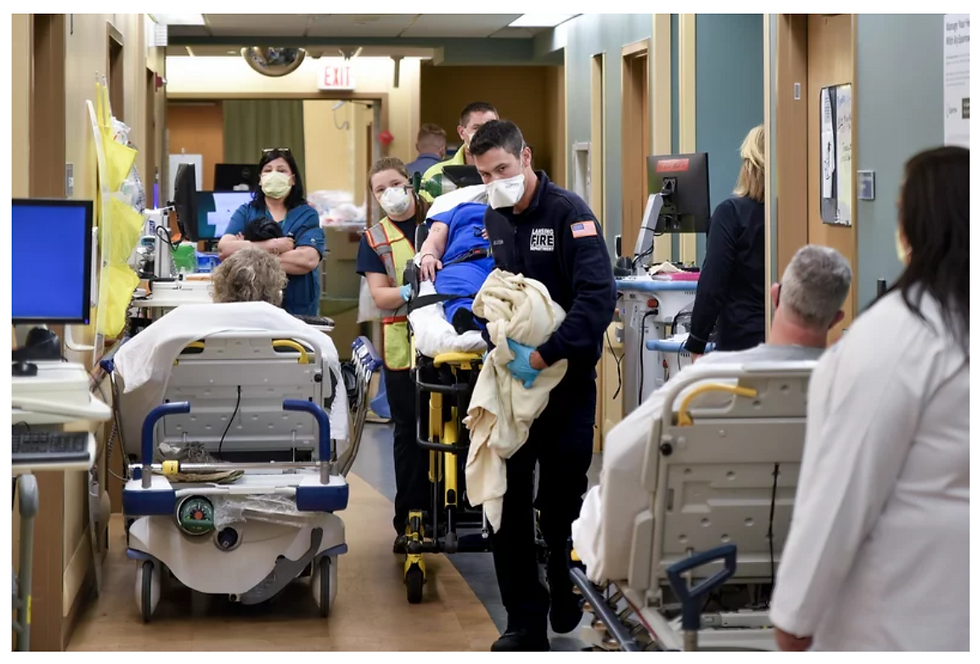The Costs of Not Having an Ostomy Center of Excellence
- katherinepiette
- Mar 9, 2022
- 3 min read
By Joe Ebberwein, Co-Founder and CFO

It is estimated that there are nearly one million persons in the U.S. living with an ostomy (Ileostomy, Colostomy, Urostomy), and there are one hundred twenty thousand new ostomy surgeries performed every year.
Reasons for ostomy creation are varied and may be necessary due to birth defects, cancer, inflammatory bowel disease, Crohn’s disease, Colitis, diverticulitis, incontinence, and many other medical conditions. Ostomies may also be necessary in cases of severe abdominal or pelvic trauma.
There are six thousand two hundred ostomy certified nurses in the U.S.¹ which creates significant issues regarding access to specialist care preoperatively and postoperatively, both in the short and long term, as patients adjust to living with an ostomy. This limited access to care, especially after discharge from the acute care setting following the creation of a stoma to home health and self-care, results in some of the highest thirty-day hospital readmission percentages, 19.1%² for colostomy and 29.1%² for ileostomy at an average cost of sixteen thousand dollars per readmission.
Compounding this significant problem are the current staffing shortages that all provider settings have experienced during the pandemic. A recent survey shows that as many as sixty-eight percent of nurses have considered leaving the profession.
Let’s take a look at how this limited access to care affects hospitals, home health agencies, surgeon offices, and the patient/caregiver in clinical outcomes, excessive costs, quality and customer satisfaction metrics.
When hospitals do not have access to an ostomy-certified nurse, this may cause the hospital a number of significant and costly issues:
Longer hospital Length of Stay (LOS)
Incorrect stoma marking and subsequent poor site location for planned ostomies
Poor patient/caregiver satisfaction
Inadequate care transition/ discharge planning
High readmission rates
Many home health agencies do not have access to an ostomy-certified nurse which represents a consequential and growing problem. As the focus of care continues to move to the home, either through traditional home health agencies or hospital at home facilitators, the lack of access to ostomy nurses creates significant issues, including:
Inadequate home health staff education on managing ostomies
Lack of education on the selection of an optimal ostomy
Lack of confidence by home health staff to care for an ostomate
More frequent nursing visits
Increased ostomy supply cost
Poor patient/caregiver and nurse satisfaction
High hospital readmission rates
Surgeons, including colorectal and urological surgeons, create ostomies for persons with serious, often life-threatening conditions, but are often ill-equipped to care for their patients post-operatively as they do not have ostomy nurses on staff. They rely on home health agencies, yet are not confident in this care for all the reasons stated above. They also rely on outpatient ostomy clinics often housed with outpatient wound care clinics that have very restricted hours for ostomy care, even in large urban cities.
Surgeon practices typically do not have ostomy specialists on staff
Surgeons often extend their patient’s hospital stay as they are not confident in the care their patients receive through home health agencies
Surgeons are not reimbursed for additional care related to troubleshooting an ostomy pouching system since post-operative patient care is included in their ninety-day global surgical reimbursement.
Finally, and most importantly, patients and their caregivers suffer significant ramifications due to the limited access to ostomy nurses. These patients are dealing with a new way of life that is often very challenging due to limited education- preoperative, postoperative, and after discharge to home and self-care. Although there are excellent resources for non-clinical support, such as the United Ostomy Associations of America (UOAA), Ostomy 101, and Ostomy Connection, there are limited resources available for addressing clinical issues related to the stoma, the peristomal skin, and issues related to the pouching system. These often result in significant issues to the patient and their caregivers, including:
Inadequate education toward all aspects of care
Low confidence for dealing with stoma, pouching system, and challenges that arise
Poor clinical outcomes
Poor quality of life (self-isolation)
Dehydration
Hospital readmission or emergency room utilization
Corstrata provides a solution for this limited access to Ostomy care. Our mission is to enable wound and ostomy patients access to fuller, more enjoyable lives - sustainably and at scale.
Our team of certified Ostomy nurses provides a reliable on-demand resource to address common issues of ostomy patients, to reduce the risk of rehospitalization, empower the patient and caregiver for self-care and management with Increased patient satisfaction.
We provide timely ostomy recommendations and education to the bedside clinician, the patient, and caregivers. Partnering with us will allow you to improve clinical and financial outcomes, including lowering the risk of ostomy complications and re-hospitalization, improving clinician satisfaction, leading to improved patient satisfaction.
Contact Us to learn more about how we could collaborate and support your program.
References
¹Staebel, K., & Burgess-Stocks, J. (2021). The value in becoming a certified ostomy nurse. Wound Management and Prevention, 67(8), 12–14. https://www.hmpgloballearningnetwork.com/site/wmp/upfront-ostomies/value-becoming-certified-ostomy-nurse
²Weiss AJ (Truven Health Analytics), Elixhauser A (AHRQ), Steiner C (AHRQ). Readmissions to U.S. Hospitals by Procedure, 2010. HCUP Statistical Brief #154. April 2013. Agency for Healthcare Research and Quality, Rockville, MD. Retrieved from http://www.hcup-us.ahrq.gov/reports/statbriefs/sb154.pdf.




Comments